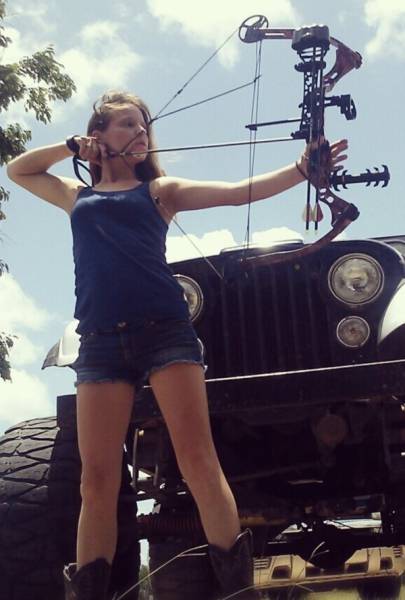|
|
Archery Girl
|
Fitted usually below the bow-hand on the centre section, because they point back towards the archer, they bring the C of G backwards. Consequently, they are typically used in conjunction with a long-rod stabiliser, the long-rod having sufficient turning moment to exceed the negative effect of the reverse weights, and so keep the forward roll of the bow on release, this being generally accepted as a desirable feature. Hence, the forward C of G effect will not be as great, but, because the reverse weight or weights are extended horizontally from the vertical centre section, their effect is to reduce vertical turning caused by bow-hand torque. This is, of course, in addition to any long-rod stabiliser anti-torque effect.
• Use and Summary
Consider the bow as being potentially on a pivot at the pressure point of the bow-hand. If the archer applies inadvertent pressure off centre of the pressure point, then inadvertent movement of the bow will result, with loss of accuracy. By careful study of the bow's movement, the appropriate positioning and addition of weight(s) may be tried, to reduce errors, although prevention is better than cure.
Further, various types of mount have been used, to allow some degree of flexure between the bow and the stabiliser weight. Similarly, the weight may be on an extension rod that may flex in itself. The object of the exercise should be kept in mind, and that object is to reduce bow inadvertent movement. Any flexure will allow some movement of the bow, without similar movement of the weight, hence lessening the weight inertia. However, many archers have found an apparent improvement in their accuracy with the use of flex / mounts. The weight in hand remains unchanged, and so may contribute to steadyness of aim. Also, the flexing gives a "rubbery" feeling, as though the bow wants to remain steady on aim. Consequently, it may be that such effect helps the archer's feeling of confidence on the shot, thereby contributing to accuracy.
|
|









